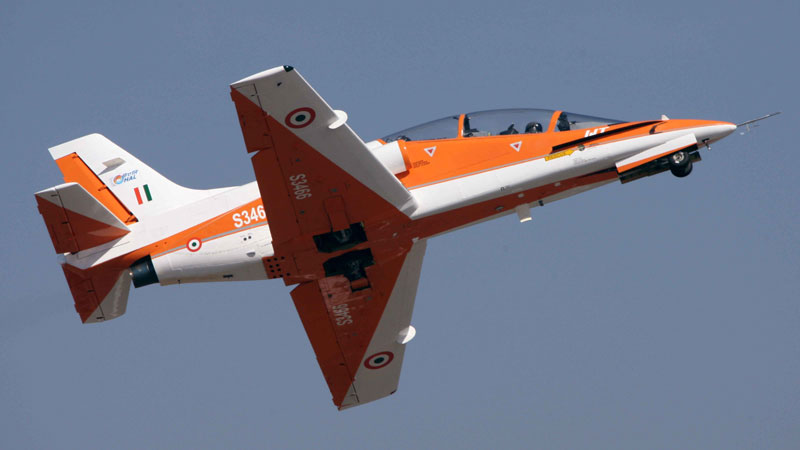 Russian companies NPO Saturn and UMPO continue to fulfil a contract on the HAL-ordered AL-55I engines designed to power the future HAL HJT-36 Sitara intermediate jet trainer (IJT). AL-55I prototypes have been mounted on both HJT-36 prototypes that had previously been powered by SNECMA Larzac 04H20 engines producing less thrust (the first of the prototypes, PT-1 serialled S-3466, conducted its first Larzac-powered flight on 7 March 2003, and the other (PT-2, S-3474) followed on 26 March 2004).
Russian companies NPO Saturn and UMPO continue to fulfil a contract on the HAL-ordered AL-55I engines designed to power the future HAL HJT-36 Sitara intermediate jet trainer (IJT). AL-55I prototypes have been mounted on both HJT-36 prototypes that had previously been powered by SNECMA Larzac 04H20 engines producing less thrust (the first of the prototypes, PT-1 serialled S-3466, conducted its first Larzac-powered flight on 7 March 2003, and the other (PT-2, S-3474) followed on 26 March 2004).
The first three AL-55I turbofans fully rig-tested by NPO Saturn were shipped to India in December 2008. By then, the one AL-55I prototype had passed the first stage of its flight tests in Russia onboard the MiG-AT (serial 823) flying testbed that first flew with it on 28 July 2008. In addition, an AL-55I was integrated with an HJT-36 prototype in Bangalore in July 2008. The engine’s operation as part of the powerplant was tested and early taxi runs at the airfield were performed.
The AL-55I-powered HJT-36 flew its maiden mission in Bangalore on 9 May 2009. Indian test pilot Baldev Singh, being HAL’s chief pilot (fixed aircraft) and HAL’s executive director for flight operations said, “The powerplant proved itself”. The flight kicked off the phase of certification test flights of the AL-55I onboard the HJT-36.
To continue the testing of the HJT-36s, NPO Saturn made a batch of six more AL-55I prototypes under the October 2008 contract and shipped them to HAL during 2009–2010. The acceptance tests of the first three of them at NPO Saturn’s test rigs were completed on 28 August 2009 and those of the remaining three on 12 February 2010.
The AL-55I’s certification flight tests on the two HJT-36s were wrapped up successfully in February 2010. Overall, 31 sorties were logged, after which the planes were headed to Jaisalmer in Rajasthan for hot-climate tests in April 2010. 13 sorties were performed there within 10 days at an ambient temperature of +44 deg. C. The sorties proved the compliance of the HJT-36 trainer and its AL-55I engine with all of the IAF requirements to the operation under such climatic conditions.
With the high-temperature trials over, the AL-55I-powered HJT-36s started their stall and spin tests. Upwards of 70 flights had been logged by the two HJT-36s powered by AL-55I turbofans by August 2010. NPO Saturn expected to deliver four next AL-55Is to HAL before year-end and six more during 2011. Now, under a HAL-awarded contract, Saturn is running developmental work to extend the engine’s service life up to 300 flying hours, with the work to be complete in November this year.
As is known, the AL-55I two-shaft turbofan rated at 1,760 kgf is being developed by NPO Saturn on order from HAL under a contract that came into force on 1 August 2005. The work on productionising a prototype engine batch in Russia, as well as certification and licence production support in India is being done by NPO Saturn and UMPO on a 50:50 basis. The contract stipulates licence production of at least 250 AL-55I engines by HAL’s plant in Koraput, with producing more engines being an option.
The AL-55I-powered HJT-36 Sitara is expected to oust IAF’s obsolete HJT-16 Kiran trainers. IAF has ordered a low-rate initial production 12-ship batch, and India’s Cabinet Committee on Security gave the green light to the Defence Ministry’s request for acquisition of the first 73 production-standard aircraft last year. IAF has plans to buy at least 70 HJT-36 more further down the line, with the service’s overall IJT requirement estimated at 200–250 aircraft.
